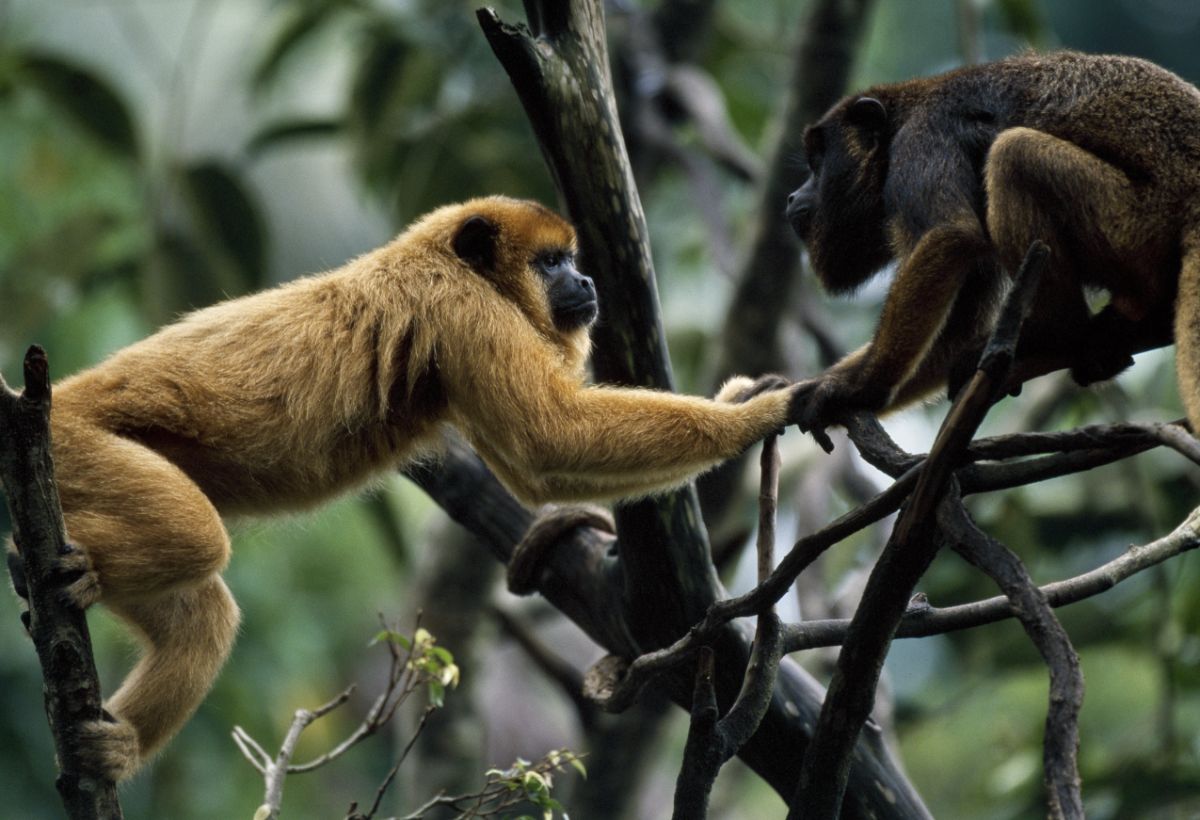Perspective on protecting nature in the midst of a pandemic
Like a growing fraction of the world I am quarantined because of the COVID-19 virus. It is not the first pandemic of my lifetime: I experienced pre-vaccine polio epidemics when parents would talk about it in front of children by spelling it out -- POLIO -- thinking they wouldn’t be understood. Of course, a century ago there was the global influenza pandemic. And we all followed the news nervously as EBOLA surfaced in human populations in Africa more than once and similarly with SARS and MERS in Asia and the Middle East.
Except for polio that only is transmitted from human to human, most of those disease agents were part of natural cycles that only spill over into humans because of disturbance of nature. Probably the classic example is yellow fever. Now easily prevented by the best—good for life -- vaccine ever made, there was an urban cycle of a mosquito (Aedes aegypti) adapted to living in human communities. Before the vaccine, aggressive elimination of potential mosquito breeding sites was powerfully effective in disease prevention.
The other cycle -- usually termed “jungle yellow fever”-- is different. It moves nomadically in the forest canopy, killing howlers and other species of monkeys – and most recently golden lion tamarins on the outskirts of Rio de Janeiro. Every once in a while, a person would walk out of the forest with a case of jungle yellow fever, but the transmission was mysterious and puzzling because the natural cycle occurred 30 meters overhead.

Two howler monkeys in forest canopy.
Creative Commons
As a graduate student I shared an office with a magnetic Colombian research MD, Jorge Boshell at the Instituto Evandro Chagas in Belem do Para – today it is the designated continental leader for arthropod borne (arbo)virus research. Substantially earlier in his career Jorge had succeeded Marston Bates and became the second Director of the Rockefeller Foundation Laboratory at Villavicencio in Colombia. One day while watching woodsmen bring down a tree, he saw them suddenly surrounded by little blue canopy Haemagogus mosquitoes – known transmitters of jungle yellow fever.
In many ways that can be taken as the ultimate example of negative health consequences from disturbing nature. Deforestation in the Amazon creates breeding sites for the hosts and vectors of afflictions like malaria and schistosomiasis. The consequences are magnified by modern transportation systems which whisk not only human pathogens, but also plant and animal pests and disease organisms around the world.
As I write a Chinese coal ship in Baltimore harbor was discovered (in the nick of time) to have egg masses of the Asian Gypsy Moth which is a known pest for at least 500 plant species. We shouldn’t be surprised by the continuing emergence of new diseases -- some with pandemic potential -- if humanity continues with its wholesale destruction of nature.
This is not, as one headline expressed it, Nature’s revenge. We actually did this to ourselves despite warnings from scientists for some time.
Going forward, we could, however, be more sensible and careful than we are. Curbing habitat and especially tropical forest destruction and controlling (ideally to the point of elimination) wildlife trafficking, shutting down the wildlife markets of China and south Asia plus bush meat n Africa should be a priority nationally and internationally. Already there are stories of China backing off its pledge to end wildlife markets. Each new COVID-19 death should re-emphasize the need to do that quickly and completely.
To epidemiologists the COVID-10 pandemic is no real surprise. A very close relative of the SARS virus it thrives in bats which are largely immune to its ill effects (an idiosyncratic aspect of bat biology that might contribute to development of a treatment in humans). Basically, the wildlife markets are anyone’s nightmare about mistreatment of other species, with appalling unsanitary conditions – just an ideal festering pot pourri for the virus to jump from a wild bat to an animal soon thereafter acquired and consumed.
.jpg)
Group of healthy Virginia big-eared bats.
Creative Commons
The lesson for humanity is not to be afraid of nature which sustains us and from whence we originated, but rather to restore it, embrace it and understand how to live with and benefit from it. We now know for example how biodiversity itself can lower the incidence of disease in at least some instances. In the U.S., Lyme Disease transmission declines when acorn production by oak trees is modest and the other organisms in the cycle are more in balance with one another as compared to the situation in major acorn crop years.
And all that biodiversity is essentially a gigantic library of pretested solutions to various biological challenges and solutions arrived at through natural selection and evolution. Humanity has huge respect for libraries of our own “works”. There is every reason to treat the living library of nature with the same respect and care.
One of the questions a biologist like myself really hates is somebody asking of some randomly chosen organism (most likely unknown to science): What good is it? That is like going to somebody’s bookshelf and pulling a volume off the shelf and asking – unread -- what good is it?
In similar vein one might ask what good are viruses -- or the value of a particular one? A legendary figure in medical history once asked that question even before science knew that viruses existed. Edward Jenner did know there was a disease that occurred in milkmaids called cow pox. He also noted there seemed to be a strong correlation between those who had suffered cowpox and those who seemed to be untouched by another disease – smallpox.
Even though he didn’t know what the causative agents of the two afflictions were, he concluded that cow pox conferred immunity to small pox. A man of his convictions, he conducted an experiment which demonstrated that cowpox victims did not “catch” smallpox. The Latin name for the invisible cause of cow pox was Vaccinia (from the Latin for cow) which led to the term vaccination – one of the foundations of modern medicine.
The number of people who have led longer, healthier and more productive lives because of vaccinations is inestimable – certainly in the multiple billions. The productivity of humanity has been similarly enhanced. We are anxious to get a COVID-19 vaccine as soon as possible and are excited that a Dengue vaccine seems quite close at hand. Yet does anyone ever stop to recognize let alone thank nature and the Vaccinia virus?
Some people are viewing the pandemic as nature fighting back against all that has been and continues to be done to it. It is human behavior and disrespect for nature that have been the cause. Further, as we cope with the pandemic, climate change is marching ahead causing strong ripples of change in all ecosystems easily tipping the balance in favor of pathogens currently unknown to us.
The wise way forward is to invest in conservation and science, and to embrace nature and the glorious variety of life with which we share this planet. A healthy future for humanity and a healthy biodiverse planet go hand in hand.



